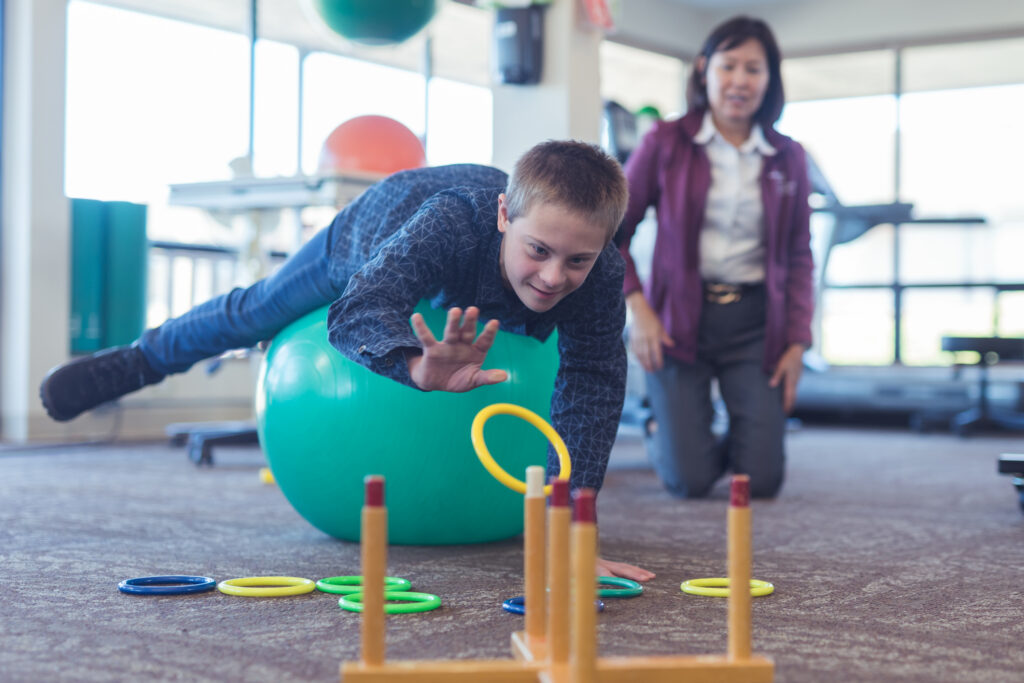Occupational Therapy Helps Children with Disabilities

Did you know that one in five children and adolescents has an emotional or behavioral disorder? Or that children with disabilities are more likely to develop mental or behavioral challenges? Fortunately, occupational therapy (OT) can help many kids with disabilities by providing integrated services where they learn, play, and grow.
OT is often used to help adults recover from a stroke, accident, or medical condition. Occupational therapists create a plan for their clients so they can live more independently; they may include exercises, advice, or changes. For children, whose “occupation” is school and play, OT promotes developmental milestones and what the child or teen needs for physical and mental well-being. Some areas that OT professionals work on with kids are social interaction, eating, dressing, hygiene, shopping and meal prep, and rest or sleep. The process usually includes activities, routines, and techniques that seem like play, including ones to help children better process and tolerate the information they get through their senses.
So, what are some of the ways OT and occupational therapists can assist children with disabilities?
- Daily living activities, like dressing and eating, but also positive behaviors and social expectations.
- Social engagement, which includes developing relationships, participating in group experiences, and increasing extra-curricular skills.
- School and work activities, such as time management and organization, nontraditional educational experiences (like museums), and participating in group learning settings.
Most students with disabilities are introduced to OT through their individualized education plans (IEPs) or individualized family services plans (IFSPs); these plans are legally binding documents detailing exactly what special education services a student receives and why. The IEP or IFSP is specific to the individual being served and supported with goals, modifications, accommodations, and personnel determined by the student’s need (not the teacher, school, or district). Occupational therapists should be part of the IFP or IFSP team, whose group goal is working toward the student’s full inclusion. It’s important to remember that students with IEP and IFSP plans don’t go to school to receive services, but, rather, receive services to participate in school.
As with adults, OT is there to ensure success and quality of life for children and adolescents. To learn more about what CPT can offer, click here.
Sources: The American Occupational Therapy Association; National Library of Medicine; Verywell Family.
![CPT Rehab [logo]](https://www.cptrehab.com/wp-content/themes/cpt-rehab/images/logo.png)